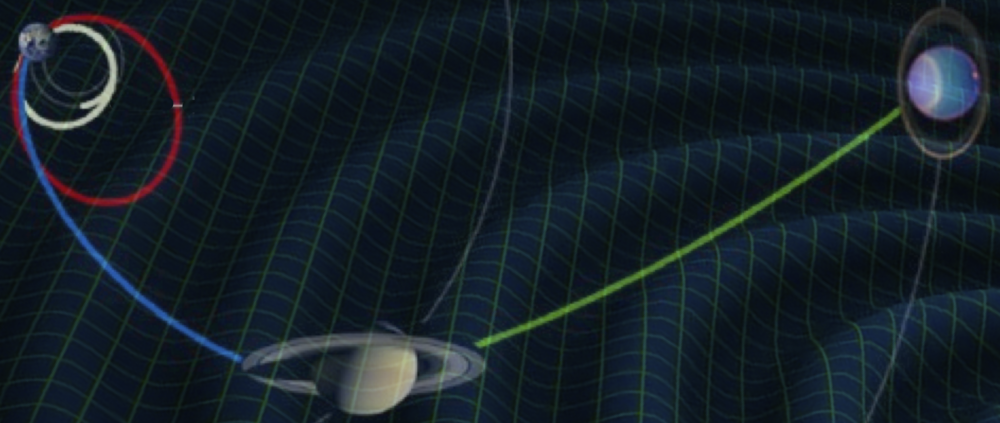Proposal abstract :
The giant planets within our Solar System present an exceptional opportunity for studying the physics of high-pressure, rotating convective systems with density and compositional variations. Among them, Jupiter and Saturn have been relatively well-studied compared to the more distant Uranus and Neptune, which remain the least explored solar system planets to this day, having been visited only once by the Voyager II spacecraft in late 1980s. These missions are not only significant for planetary science, but also an exceptional opportunity for exploiting the non-planetary science potential of the spacecraft, due to long spacecraft cruise periods and travel distances. Radio communication between Earth and two distant spacecraft presents a unique case for investigating various phenomena via Doppler tracking, with which we can measure variations in the light travel time between Earth and the spacecraft and deviations in the spacecraft trajectory as it travels to the outer planets. Measurements of the Doppler signal can allow us to utilize the ~ 10 year travel time of these missions to constrain the dark matter content in the Solar System, discover exoplanets around compact binaries in the Milky way, and detect low-frequency gravitational waves from supermassive black hole systems at cosmological distances.
Summary of outcomes :
The main output from these two meetings is the paper “Bridging the micro-Hz gravitational wave gap via Doppler tracking with the Uranus Orbiter and Probe Mission: Massive black hole binaries, early universe signals and ultra-light dark matter” (Zwick et al arXiv:2406.02306 and Phys Rev D under revision). The main results were (see research highlights below:):
- computing the expected sensitivity of the Uranus Orbiter and Probe (UOP) to gravitational waves, dark matter detection, and early universe physics under different tracking scenarios, and identifying possible areas of improvement;
- estimating the expected event rates from different astrophysical sources.
This work turned out to be particularly topical, because of (i)~the adoption of the UOP, and (ii)~the detection of a nanohertz gravitational-wave background, out of which microhertz transients would arise.
A second topic, which came up unexpectedly during the course of our discussions, was the potential role of deep-space missions for experiments on quantum entanglement.
- During the first meeting we worked together to do the first computations.
- The second meeting was devoted to tidying up our results, following community and reviewer comments, discussing the prospects of quantum-entanglement experiments with the OUP, and making connections with the larger community.
Research Highlights:
Team551_ISSI_Summary_slide1
Team551_ISSI_Summary_slide2
Publications originating from workshop series:

